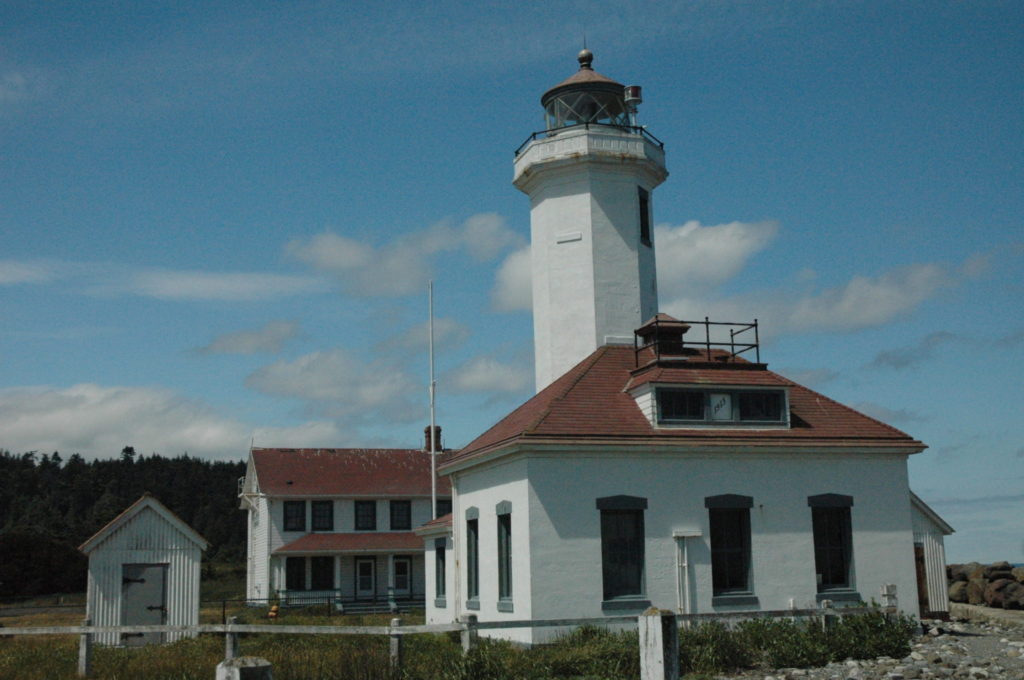
By Dorothy Rice Bennett
Sequim, Washington, has been my home for seven years. The longer I live in this small rural community on the Olympic Peninsula, the more admiration and love I have for this small coastal city and the satisfying life experiences available here.
Although Sequim celebrated its Centennial in 2013, it is largely a “new” town. During the 1930s, Sequim—a subject of a resent bestselling novel, Boys In The Boat, by Daniel James Brown—had a couple of thousand residents. Between 2000 and 2009, Sequim grew twenty-nine percent, pretty amazing, and now boasts a population of about 6,500. But the actual city has a small footprint, and much of the Sequim population lives outside city limits in Clallam County. So we’re really speaking of approximately 30,000 local residents when we talk of Sequim.
Once a farming community with reputedly some one hundred dairy farms on the Sequim Dungeness Prairie—spreading to the north toward the Straits of Juan de Fuca—Sequim’s buildings and homes are largely recent or recently remodeled. Older structures have been torn down or redone so that you won’t quickly notice what they once were.
Remaining landmarks
I have written about the Railroad Bridge Park and the Johnson Creek Trestle in earlier blogs. Both these structures are remains of 20th century railroading days on the Peninsula. I’ve also covered the New Dungeness Lighthouse. But in driving around town I have found a few more outstanding reminders of the “old days” in Sequim.
Out on the prairie, my partner Connie and I located the Dungeness Schoolhouse. Opened in 1893 with one teacher and sixty students, the two-story schoolhouse continued in operation until 1955. After the Dungeness School District merged with the Sequim School District, the venerable building was saved from ruin and preserved by caring local citizens. Listed in 1988 on the National Register of Historic Places, the schoolhouse is now owned by the Sequim Museum & Arts Center and enjoys widespread community use.
I have attended several musical and reader’s theatre productions in this historic building, and the place always gives me the warm fuzzies. However, the fact that the auditorium is on the second floor, with a magnificent but older staircase for access, has been a bit of a problem. An elevator has now been added so the famed building can continue to house community events.
A grain elevator?
In downtown Sequim, amid one and two-story shops, restaurants, and coffee houses, sits a grain elevator. Hard to miss as you are driving down Washington Street! This structure is certainly an important relic from the area’s past history. Railroad tracks once ran through the center of t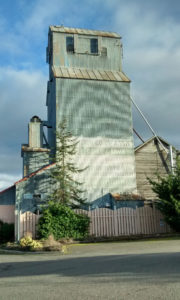 own, and the grain elevator was built next to the tracks for pretty obvious reasons. The building
own, and the grain elevator was built next to the tracks for pretty obvious reasons. The building
was used as such from the mid 1940s until the 1970s. Since then, it has anchored Sequim’s “skyline” and has been the home of two Mexican restaurants on the ground floor and also serves as a communications tower. A faded sign on the western side of the building calls attention to the Clallam Coop Association, which clearly refers to grain elevator days. This building looks much as it did when in use for farm product storage and shipping. I’m really glad no one has decided to tear it down.
From church to theatre
On Sequim Avenue, just a few blocks north of Washington Street and across from Sequim High School (also with several older brick buildings) sits the current Olympic Theatre Arts Center. If you look at the building closely, it looks like a church, and it originally was one.
Built in the 1920s, the structure first served as the Trinity United Methodist Church. When the church moved to a new and larger building near Carrie Blake Park, the old church became home to the Sequim Boys and Girls Club. Several years later, when the club moved to a larger building on Fir St., the church was sold again.
This time, it became home to Olympic Theatre Arts in 2000. The volunteer theatre group added a main stage house to the building in 2010 and now has two staging areas—but even remodeled, the outside of the building still looks like the church it once was.
Sequim once had its own opera house, located on the second floor of a building on West Washington Street. Olympic Theatre Arts used that location for several years before moving to their current building. Unfortunately for history buffs, the Sequim Opera House has been remodeled sufficiently that it is not recognizable as you pass by.
Take your camera!
Today’s Sequim is a new town with old roots. Poke around. Look at old barns on the prairie. See the lighthouse from Marine Drive at the edge of the Straits of Juan de Fuca. Visit the Railroad Bridge Park and Johnson Creek Trestle, both on the Olympic Discovery Trail. Drive downtown and see the grain elevator and the Olympic Theatre Arts Center. Take a look at the high school buildings with old brick walls giving away its age, despite some remodeling. Visit the Sequim Museum & Arts Center at 175 Cedar St. Drive by the Dungeness Schoolhouse at 2781 Towne Road.
Hope you have GPS! And have fun in sunny Sequim!
For general information on Sequim’s history, visit
For more information on Sequim’s historic sites, visit
http://www.visitsunnysequim.com/index.aspx?NID=118
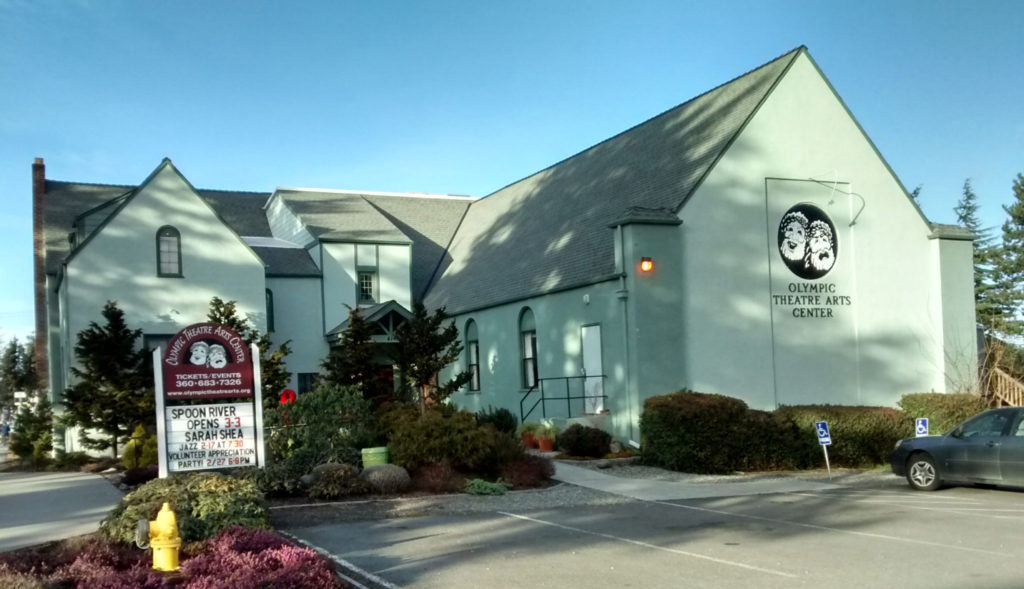

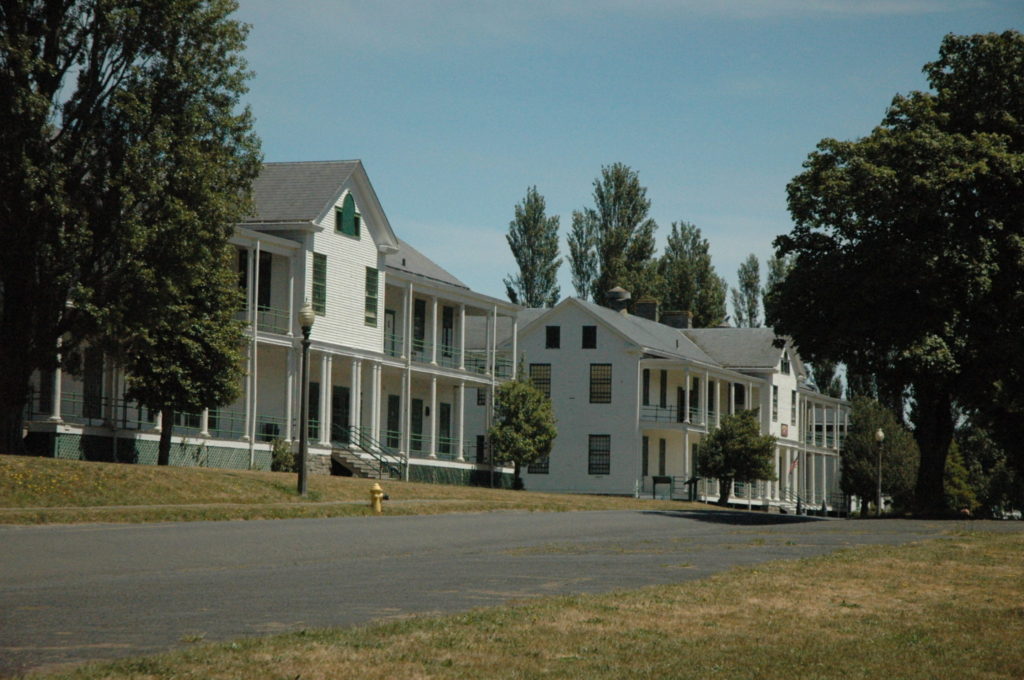
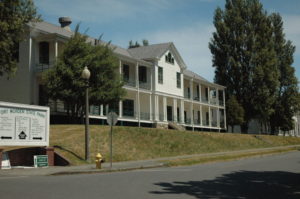 summer camps, music festivals, restaurants, and rentals for visitors. Several of the main historic buildings are laid out in rows on both sides of a broad common grass field—a parade ground where troops once assembled and marched. Photo ops abound, and walking around these buildings offers visitors a unique sense of history. My personal favorite spot is the fort’s gift shop (since I am a T-shirt aficionado). Photos taken here for this blog are courtesy of Connie, who is good with a camera! We were picnicking that day and found a lovely shaded spot with a picnic table just off the main street—thanks to advice from gift shop staff.
summer camps, music festivals, restaurants, and rentals for visitors. Several of the main historic buildings are laid out in rows on both sides of a broad common grass field—a parade ground where troops once assembled and marched. Photo ops abound, and walking around these buildings offers visitors a unique sense of history. My personal favorite spot is the fort’s gift shop (since I am a T-shirt aficionado). Photos taken here for this blog are courtesy of Connie, who is good with a camera! We were picnicking that day and found a lovely shaded spot with a picnic table just off the main street—thanks to advice from gift shop staff.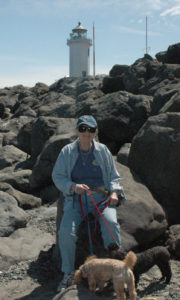 exist from many directions. And the rocky beach (everything from pebbles to boulders) is an attraction of its own.
exist from many directions. And the rocky beach (everything from pebbles to boulders) is an attraction of its own.